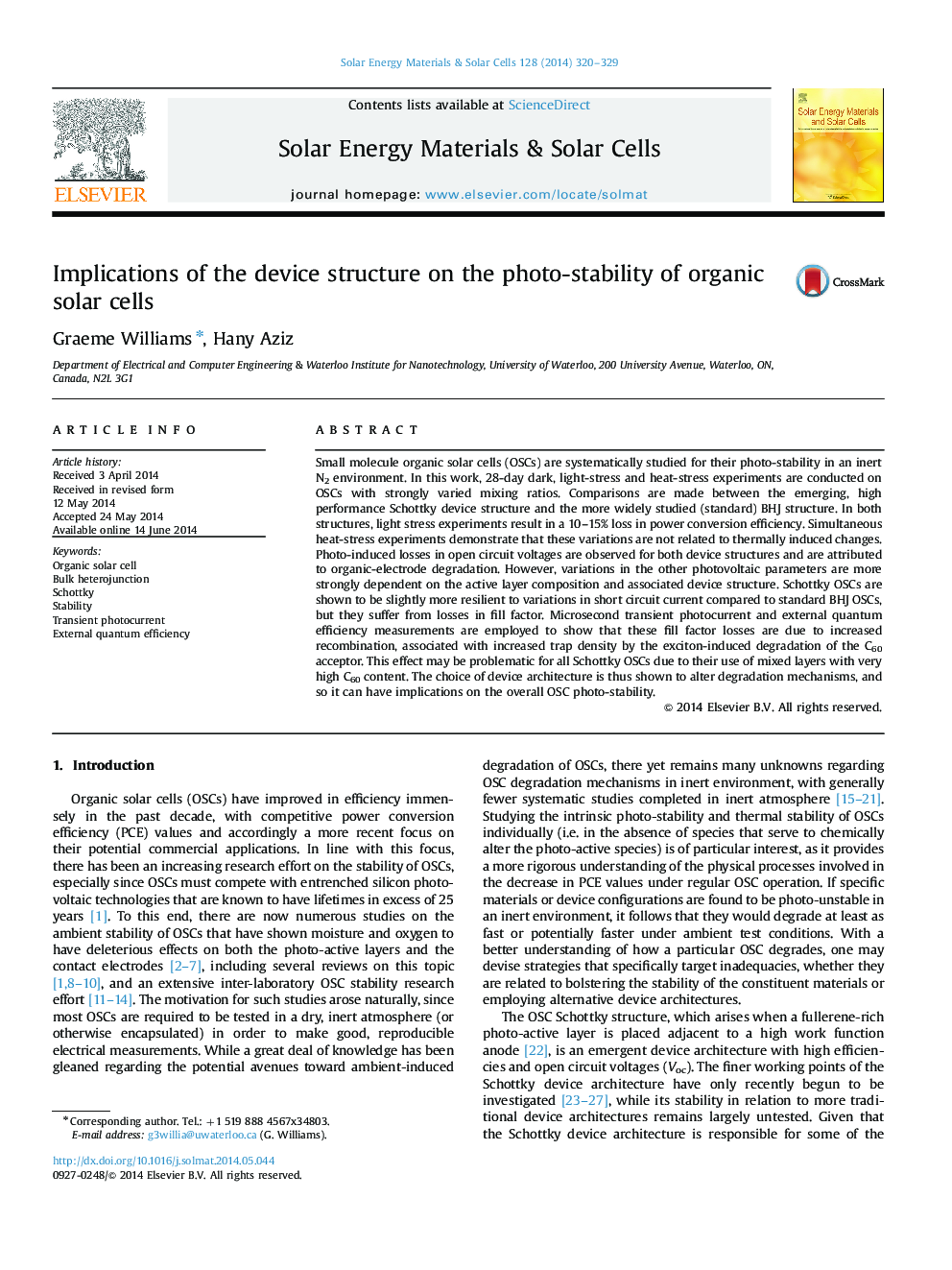| کد مقاله | کد نشریه | سال انتشار | مقاله انگلیسی | نسخه تمام متن |
|---|---|---|---|---|
| 78005 | 49312 | 2014 | 10 صفحه PDF | دانلود رایگان |
• We study the photo-stability of OSCs with varying device architectures.
• Light stress degrades efficiency by 10–15% due to interfacial Voc losses.
• Schottky OSCs, with high C60 content, decrease in EQE at the C60 aggregate band.
• Schottky OSC transient response hastens due to exciton-induced trap formation.
• Photo-degradation mechanisms fundamentally relate to device structure.
Small molecule organic solar cells (OSCs) are systematically studied for their photo-stability in an inert N2 environment. In this work, 28-day dark, light-stress and heat-stress experiments are conducted on OSCs with strongly varied mixing ratios. Comparisons are made between the emerging, high performance Schottky device structure and the more widely studied (standard) BHJ structure. In both structures, light stress experiments result in a 10–15% loss in power conversion efficiency. Simultaneous heat-stress experiments demonstrate that these variations are not related to thermally induced changes. Photo-induced losses in open circuit voltages are observed for both device structures and are attributed to organic-electrode degradation. However, variations in the other photovoltaic parameters are more strongly dependent on the active layer composition and associated device structure. Schottky OSCs are shown to be slightly more resilient to variations in short circuit current compared to standard BHJ OSCs, but they suffer from losses in fill factor. Microsecond transient photocurrent and external quantum efficiency measurements are employed to show that these fill factor losses are due to increased recombination, associated with increased trap density by the exciton-induced degradation of the C60 acceptor. This effect may be problematic for all Schottky OSCs due to their use of mixed layers with very high C60 content. The choice of device architecture is thus shown to alter degradation mechanisms, and so it can have implications on the overall OSC photo-stability.
Figure optionsDownload as PowerPoint slide
Journal: Solar Energy Materials and Solar Cells - Volume 128, September 2014, Pages 320–329
